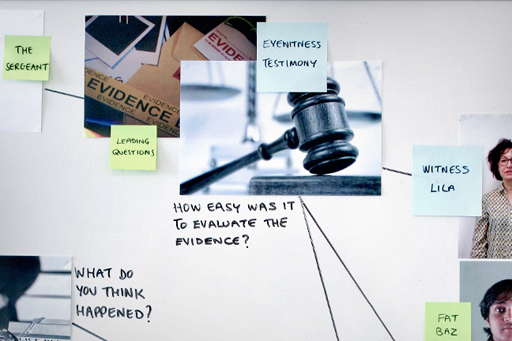1.3 Summing up DI Bullet’s case

How easy was it to evaluate the evidence, and did your evaluation match that of the expert? Although the evidence is consistent and may appear persuasive in suggesting the guilt of The Sergeant and Fat Baz, there were significant flaws throughout the entire investigation. In particular:
- We would expect the statements to be consistent because of the co-witnessing effect. The witnesses heard each other’s account, which could easily have led them to change their memories to fit what they heard the other witness say.
- The interviews were based on a very large number of leading questions that introduced a lot of post-event information. Again, this could easily result in the memories of the witnesses changing to incorporate the information supplied in the questions.
- The composites were created using a system that is not a good match for how we remember and recognise faces. The images produced are therefore unlikely to be accurate.
- The identification parades involved a simultaneous presentation and both witnesses were given instructions that would have led them to believe that the perpetrator was present. In addition, they were actively encouraged to select someone.
There is also the fact that the only evidence available was that of eyewitness testimony – which is not really reliable enough to build a case on in the absence of other evidence. It is also important to consider the overall approach to the investigation. DI Bullet had a hunch as to who the perpetrators were following the initial statements. He then conducted the rest of the investigation in order to produce evidence that the two men were guilty, including asking leading questions that conformed to his idea of how the crime unfolded and who committed it.
